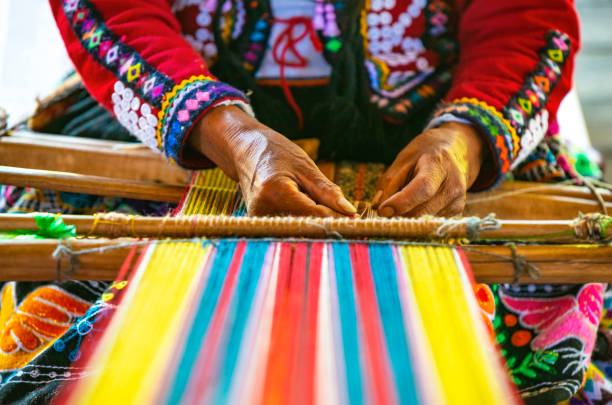
Menu

Sikkim, the enchanting northeastern state of India, is a place where culture, tradition, and artistry are woven together — quite literally. Among its many cultural treasures, the handwoven textiles of Sikkim stand out as beautiful symbols of the region’s identity and heritage. Woven with patience, skill, and devotion, these fabrics tell the story of Sikkim’s people, their beliefs, and their way of life.
Ancestral Art of the Lepchas and Bhutias
The tradition of weaving in Sikkim is primarily kept alive by the Lepcha and Bhutia communities. For the Lepchas, weaving is not just a craft but a sacred duty. Traditionally, every Lepcha woman was expected to learn the art of weaving from a young age. They wove fabrics mainly for household use, ceremonial occasions, and even for barter.
Lepcha textiles are distinct for their bold stripes and natural dyes, using colors like indigo, turmeric, and madder. The patterns are often symbolic, representing elements of nature such as rivers, mountains, and forests, which hold deep spiritual significance for the Lepcha people.
The Bhutias, who migrated from Tibet, brought with them another style of weaving, influenced by Tibetan traditions. Their handwoven woolen fabrics — including beautiful woolen carpets (known as “Dees”), shawls, and traditional dresses — feature intricate geometric and religious motifs.
Craftsmanship and Materials
Weaving in Sikkim is a meticulous process. Traditionally, weavers use backstrap looms or waist looms, which allow flexibility and control. Every step, from spinning the thread to setting up the loom to weaving intricate patterns, requires immense concentration and skill.
The materials are often natural — cotton for summer clothing and wool for the harsh winter months. Natural dyes extracted from plants, bark, and minerals create the vibrant palette that Sikkimese textiles are known for.
Modern Revival and Sustainable Fashion
Today, handwoven textiles from Sikkim are gaining new appreciation. With the global movement toward sustainable and ethical fashion, Sikkim’s artisans are finding wider markets for their creations. Initiatives by the government and NGOs are helping to preserve these traditional crafts, offering training and marketing support to the weavers.
In places like Namchi and Gangtok, you can visit local weaving centers and even watch artisans at work, preserving an art form that has been handed down through generations. Owning a piece of Sikkimese handwoven fabric means carrying a piece of history and supporting a living tradition that is still vibrant and evolving.



